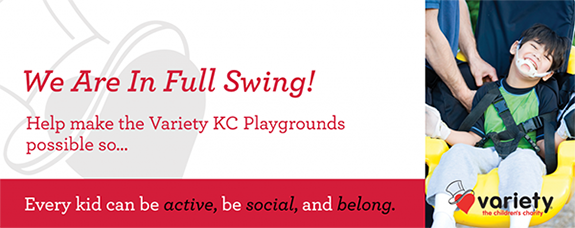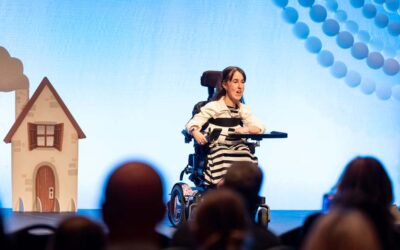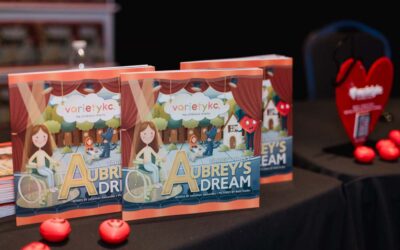Variety KC is proud to be the first to help create INCLUSIVE Playgrounds in Independence, Olathe and Tiffany Hills so all kids can be Active, Be Social and Belong! Help us by donating to www.varietykc.org/donate.
Here’s the difference between an Inclusive Playground and an Accessible Playground. When combined, it’s magic!
When we engage in a discussion about inclusive playgrounds, we are often met with the question, “What exactly does that mean?” We find ourselves explaining, “It’s a step beyond having an accessible playground.” Here’s how we see the difference:
Our Differentiation
An accessible playground describes a play space where parts or all of the playground equipment are able to be reached or entered by children or adults with physical disabilities who use wheelchairs or walkers, etc. Most parks and recreation departments define accessible play: “The idea of accessible play involves creating a playground that will enable children and adults to get to the play equipment. The paths or routes leading to the playground need to be barrier free. … The accessibility issue begins from the time the family parks their car until the child is enjoying the playground. The idea of accessible play continues once a child or adult arrives at the playground equipment.” These playgrounds should have many ramps for children with disabilities to utilize. The playground surface should be one that a wheelchair or walker can move on and NOT all sand or wood chips. Some folks may think that an accessible playground is ONLY for children or adults with disabilities.
An inclusive playground takes into account not just the physical equipment and tactics, but incorporates the emotional, social and psychological benefits of play. It embraces the philosophy that children and adults of ALL abilities benefit immensely from being able to play and interact together. These types of playgrounds take into account children with physical disabilities as well as special needs or developmental disabilities. In addition to ramps, accessible swings and play panels, you may find Sensory Walls, Quiet Sensory Gardens, Water Play or Splash Pads, and more. An inclusive playground can offer many opportunities for children to further develop physical, cognitive, sensory and social skills. An inclusive design includes a balance of play experiences to build all these skills.
We have learned that accessibility is not enough. Simply getting a child with limited mobility onto the playground doesn’t necessarily enhance their play experience. Nor does it take into consideration children with sensory deficits and other developmental issues.”
Children and adults who visit an inclusive playground have many options in which to interact at these special play spaces. It goes way beyond just some groovy ramps and swings. When combined, accessible and inclusive playgrounds create a WHOLE play experience for ALL children and adults. It’s a wonderful time!




